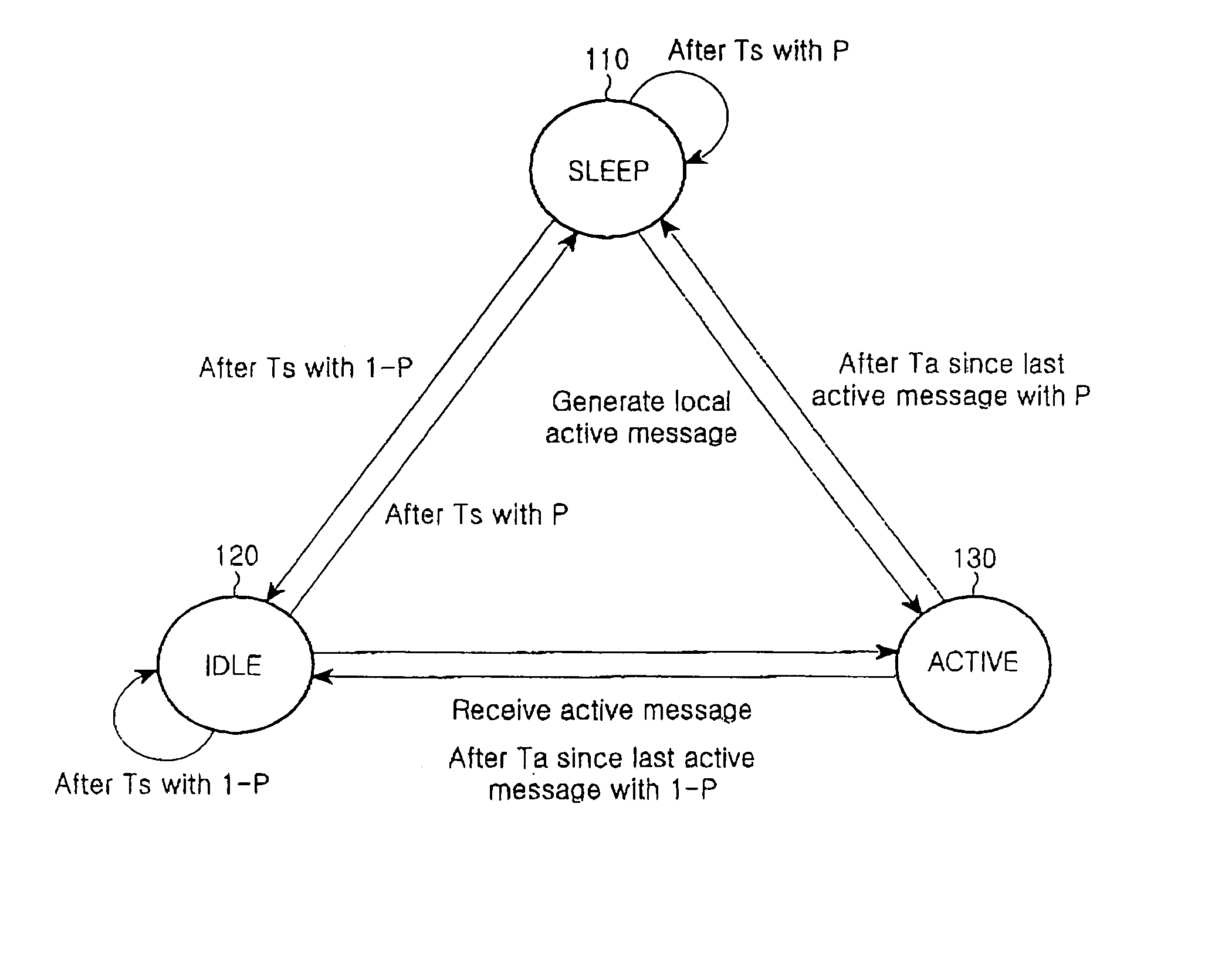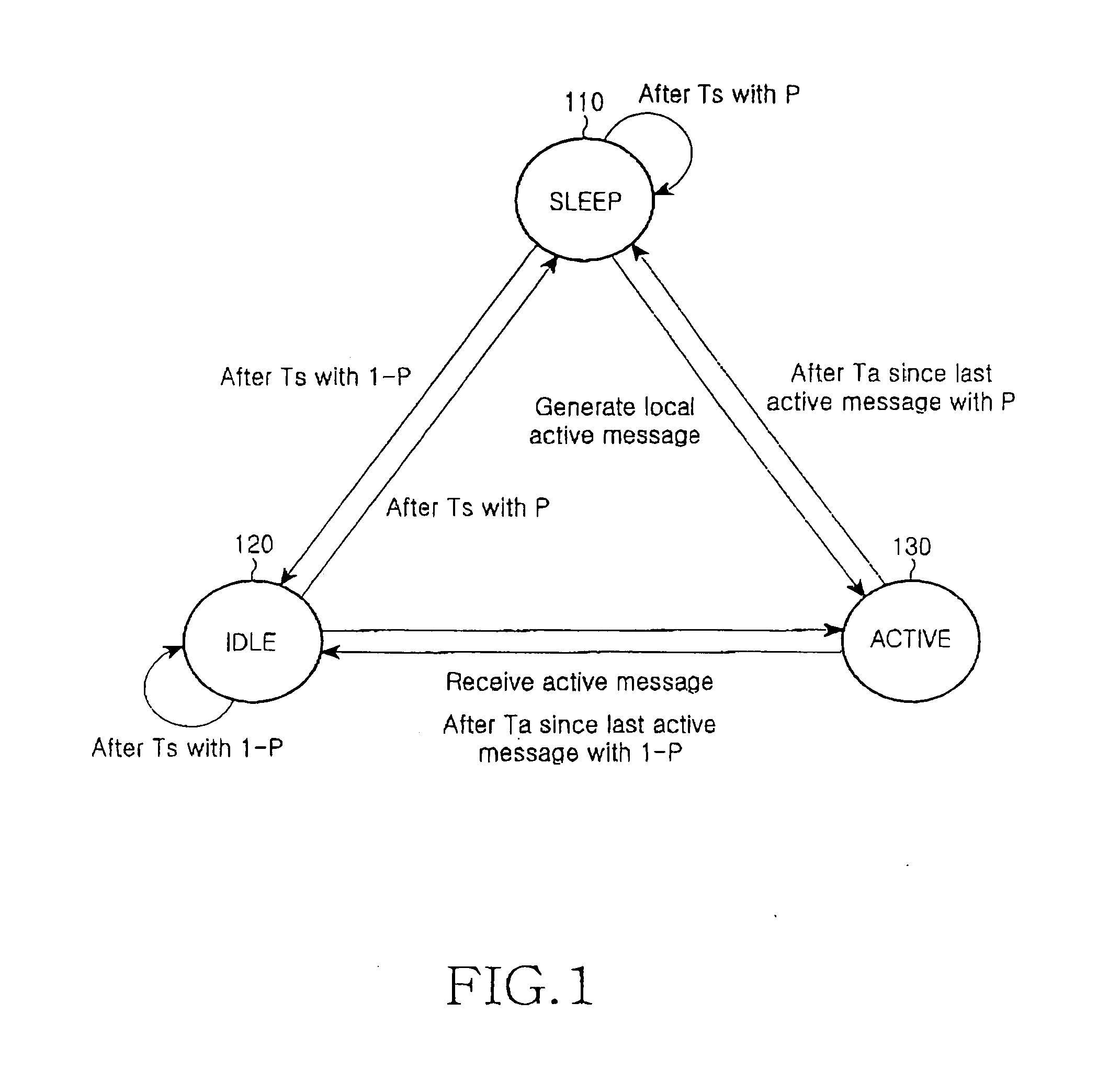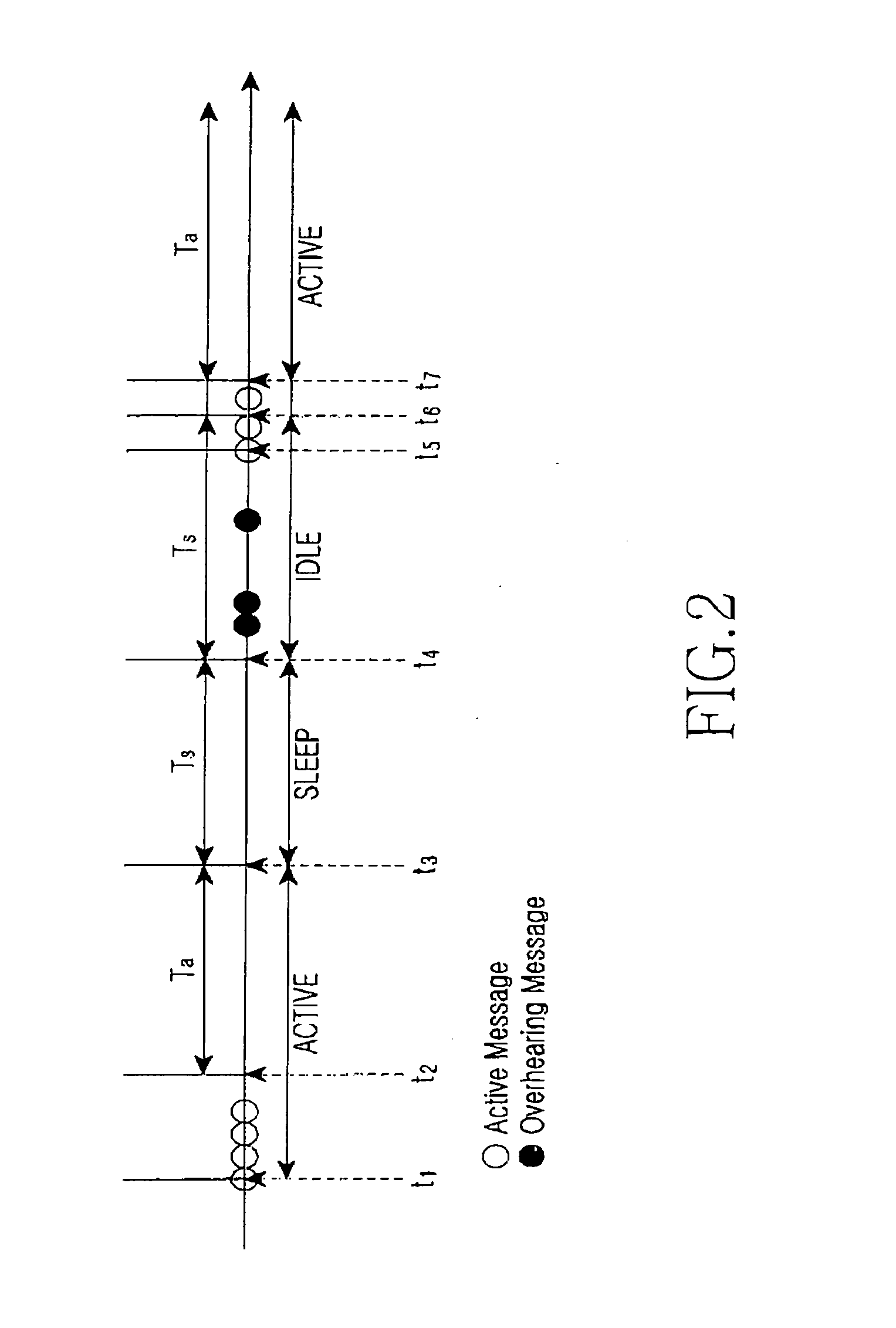Power-saving method for wireless sensor network
- Summary
- Abstract
- Description
- Claims
- Application Information
AI Technical Summary
Benefits of technology
Problems solved by technology
Method used
Image
Examples
Embodiment Construction
[0023] Preferred embodiments of the present invention will be described in detail hereinafter with reference to the accompanying drawings. In the following description of the present invention, a detailed description of known functions and configurations incorporated herein will be omitted when it may obscure the subject matter of the present invention.
[0024] The power-saving method of the present invention is adopted to a wireless sensor network with a single physical channel (frequency or code), which is available for all (data and control) message delivery, and there is no separate physical channel for control messages (i.e., in-band signaling). Each node in the system is equipped with an omni-directional antenna, and has only a single transceiver, i.e., nodes cannot send and receive message simultaneously. To address the multiple access problem a four-stage RTS / CTS mechanism with no power control, i.e., the fixed power is used to transmit RTS, CTS, DATA, and ACK messages.
[0025...
PUM
 Login to View More
Login to View More Abstract
Description
Claims
Application Information
 Login to View More
Login to View More - R&D
- Intellectual Property
- Life Sciences
- Materials
- Tech Scout
- Unparalleled Data Quality
- Higher Quality Content
- 60% Fewer Hallucinations
Browse by: Latest US Patents, China's latest patents, Technical Efficacy Thesaurus, Application Domain, Technology Topic, Popular Technical Reports.
© 2025 PatSnap. All rights reserved.Legal|Privacy policy|Modern Slavery Act Transparency Statement|Sitemap|About US| Contact US: help@patsnap.com



